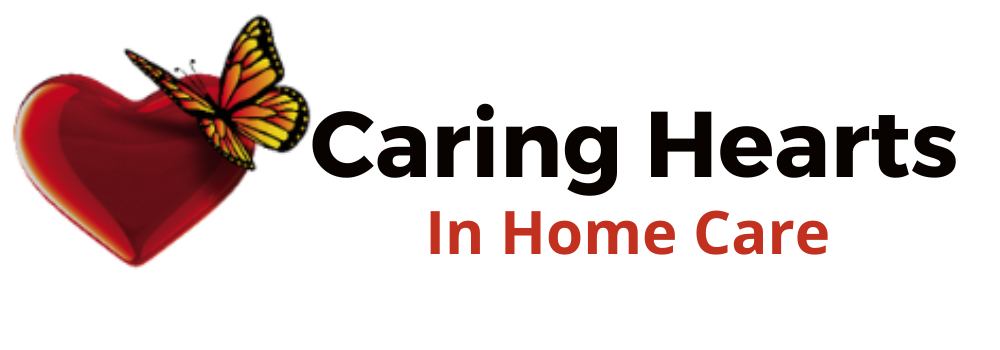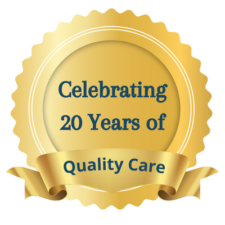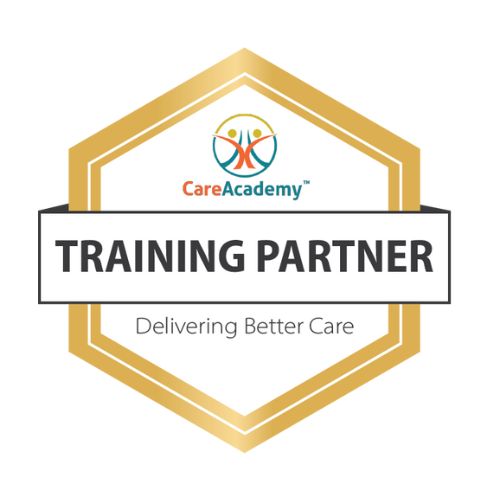As a significant and life-altering medical condition, roughly 800,000 Americans every year experience a stroke – most of whom are aged 65 and older. As a result, families in communities across America, including Sedona, must prioritize stroke prevention and stroke care to help ensure their aging loved ones’ health and well-being. Read on to learn more about strokes, stroke prevention tips, and what to look for if you suspect someone close to you might be experiencing a stroke.
What is a Stroke?
A stroke, or cerebrovascular accident, occurs when the blood supply to the brain is interrupted or reduced, leading to brain cell oxygen and nutrient deprivation. Because strokes target the brain, they can potentially cause temporary paralysis, a permanent disability, or even death. There are two main types of strokes: ischemic and hemorrhagic. An ischemic stroke results from a blockage in a blood vessel supplying the brain, while a hemorrhagic stroke occurs when a blood vessel inside the brain ruptures.
Stroke Prevention Risk Factors
These risk factors increase the likelihood of having a stroke:
- High blood pressure
- Diabetes
- Elevated cholesterol levels
- Cigarette smoking
- Drinking alcohol to excess
- Obesity
- Physical inactivity
- Family history of stroke
- Age (risk increases with age)
- Previous history of stroke or transient ischemic attack (TIA)
When assisting loved ones, family caregivers must understand these risk factors and work towards minimizing them to help prevent a stroke from occurring.
Stroke Care Tips for Family Caregivers in Sedona
Recognizing the early warning signs of a stroke and knowing what to do in an emergency is vital for family caregivers. The FAST method is a reliable way to spot stroke warning signs:
- F = Face Drooping – Does one side of the face droop or is it numb? Ask the person to smile. Is their smile uneven?
- A = Arm Weakness – Is one arm weak or numb? When they raise both arms, does one arm drift downward?
- S = Speech Difficulty – Is their speech slurred?
- T = Time to Dial 911 – Stroke is an emergency in which every minute counts. Call 911 immediately and note the time the symptoms first appeared.
Additional stroke symptoms include:
- Leg, face, or arm numbness or weakness, notably on one side of the body
- Confusion, difficulty speaking or understanding speech
- Blurred vision in one or both eyes
- Difficulty walking, dizziness, loss of balance or coordination
- Severed headache with no known cause
If a loved one is experiencing any of the above, you must act quickly. Call emergency services immediately and note the time when the symptoms first appeared. Do not wait to see if the symptoms improve on their own, as timely intervention can make a significant difference in the outcome of a stroke.
How to Devise an Effective Stroke Prevention Strategy
In addition to being prepared for a stroke emergency, family caregivers can also take proactive steps to prevent strokes from occurring. Here are some stroke prevention tips and strategies for anyone looking after a senior or other high-risk individual:
Manage Risk Factors
Work with healthcare professionals to monitor and control conditions such as high blood pressure, diabetes, and elevated cholesterol. Encourage healthy lifestyle choices, including regular exercise, a well-balanced diet, and avoiding smoking and excessive alcohol consumption.
Medication Management
Ensure prescribed medications are taken as directed and that regular follow-up appointments with healthcare providers are maintained. Medication compliance is vital in managing conditions that increase the risk of stroke.
Physical Activity
Once cleared by their doctor, encourage regular physical activity tailored to the individual’s abilities and preferences. Exercising for at least 20 minutes, 3 to 5X per week, can help maintain a healthy weight, lower blood pressure, and improve cardiovascular health, reducing one’s stroke risk.
Stress Management
Help your loved one manage stress through relaxation techniques, mindfulness practices, and activities they enjoy, as chronic stress can exacerbate high blood pressure and other stroke risk factors.
Regular Health Checkups
Ensure your loved one gets tested regularly, including blood pressure checks, cholesterol tests, and diabetes screenings. Early detection and management of these conditions can help prevent strokes.
Learn All You Can
Stay informed on the latest stroke research and stroke prevention guidelines. Attend educational workshops, seminars, or support groups to learn more about stroke risk factors, warning signs, and caregiving strategies.
Get Help
Build a support network of healthcare professionals, friends and family, and community resources to help care for your loved one. Seeking help and sharing responsibilities can help prevent caregiver burnout and ensure the best possible care for your loved one. When you need a break, or “respite,” another option is to hire a professional in-home caregiver from a reputable home care provider.
While serving as an extended family in the home, a trained in-home caregiver can provide your loved one with the nurturing they deserve, allowing you to take a well-deserved break.
Professional Home Care: Your Reliable Stroke Prevention Partner
Home care providers play a vital role in the stroke prevention process, providing personalized support and assistance to at-risk individuals. Here are some ways in-home caregivers can help aging, ill, or disabled individuals reduce their stroke risk:
Medication Supervision
Home care providers help clients adhere to their prescribed medications, ensuring they are taken on time and on dose. Proper medication management is essential in controlling conditions such as high blood pressure, diabetes, and high cholesterol – significant stroke risk factors.
Lifestyle Support
In-home caregivers know how to help clients adopt and maintain healthy lifestyles. This role may include encouraging regular physical activity, preparing nutritious meals, and promoting habits that help clients manage stress and maintain their well-being. Promoting healthy lifestyles is an impactful way for home care providers to help reduce the risk of strokes.
Health Condition Monitoring
In-home caregivers are trained to monitor their clients’ vital signs, including blood pressure and blood sugar. Routinely monitoring these key health indicators allows caregivers to identify any changes or abnormalities early on and take appropriate action to prevent complications that could cause a stroke.
Education and Awareness
Reputable home care providers educate clients and their families about stroke risk factors, warning signs, and preventive strategies. Through raising awareness and providing practical information, caregivers empower individuals to make better-informed decisions about their health and proactively implement measures to reduce their risk of stroke.
In conclusion, home care plays a vital role in stroke prevention by offering personalized support, health condition monitoring, promoting healthy habits, and educating individuals about stroke prevention strategies. Partnering with home care providers helps at-risk individuals receive the support and guidance they need, reducing their likelihood of experiencing a life-altering stroke. As an additional benefit, professional in-home caregivers also give family caregivers peace of mind knowing their loved ones are in capable hands!
Dignified In-Home Stroke Prevention and Recovery Care in Sedona
Helping a loved one prevent a stroke or recover afterward can be overwhelming. When you need assistance, contact Caring Hearts in Home Care in Sedona. As a fully licensed and accredited home care provider, our highly trained professionals can provide the dignified Stroke Prevention or Stroke Recovery Care your loved one deserves. While serving as an extended family in the home, our compassionate caregivers can perform various duties, including Premier Private Care, Specialized Care, Caring Hearts “Hearts of Gold Services”, 24 Hour Care, Home Care Services, Home Management, Caring Hearts “On the Go” Services, as well as Alzheimer’s & Dementia Care.
While assisting clients in Sedona, Prescott, Cottonwood, Camp Verde, and Flagstaff, our agency’s focus is maintaining their quality of life, along with their dignity, self-esteem, and independence. For your added convenience, all our home care services can be individually personalized into an affordable package when and where you need them! Please visit www.caringheartsofsedona.com to learn more about our in-home Stroke Prevention and Stroke Recovery Care services or schedule a FREE consultation for someone in our service area.




